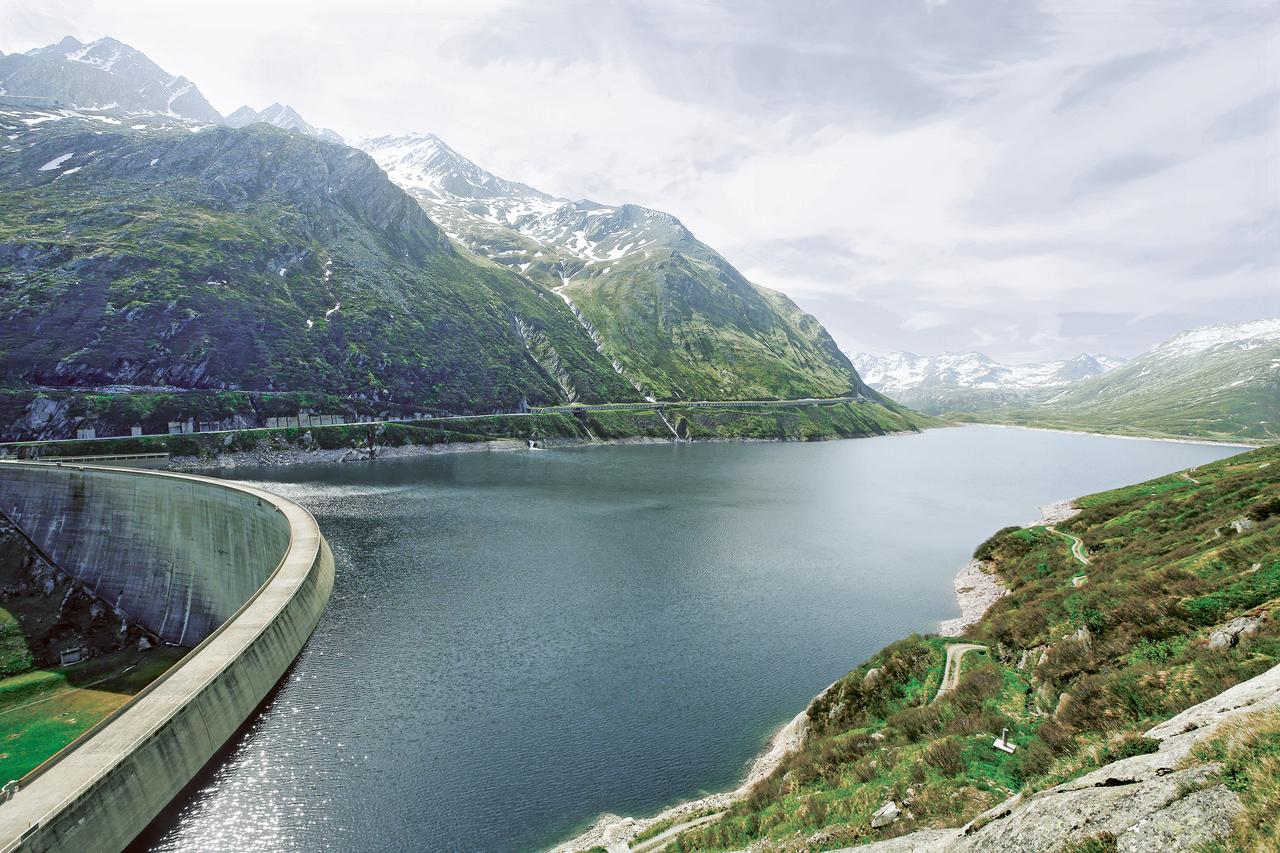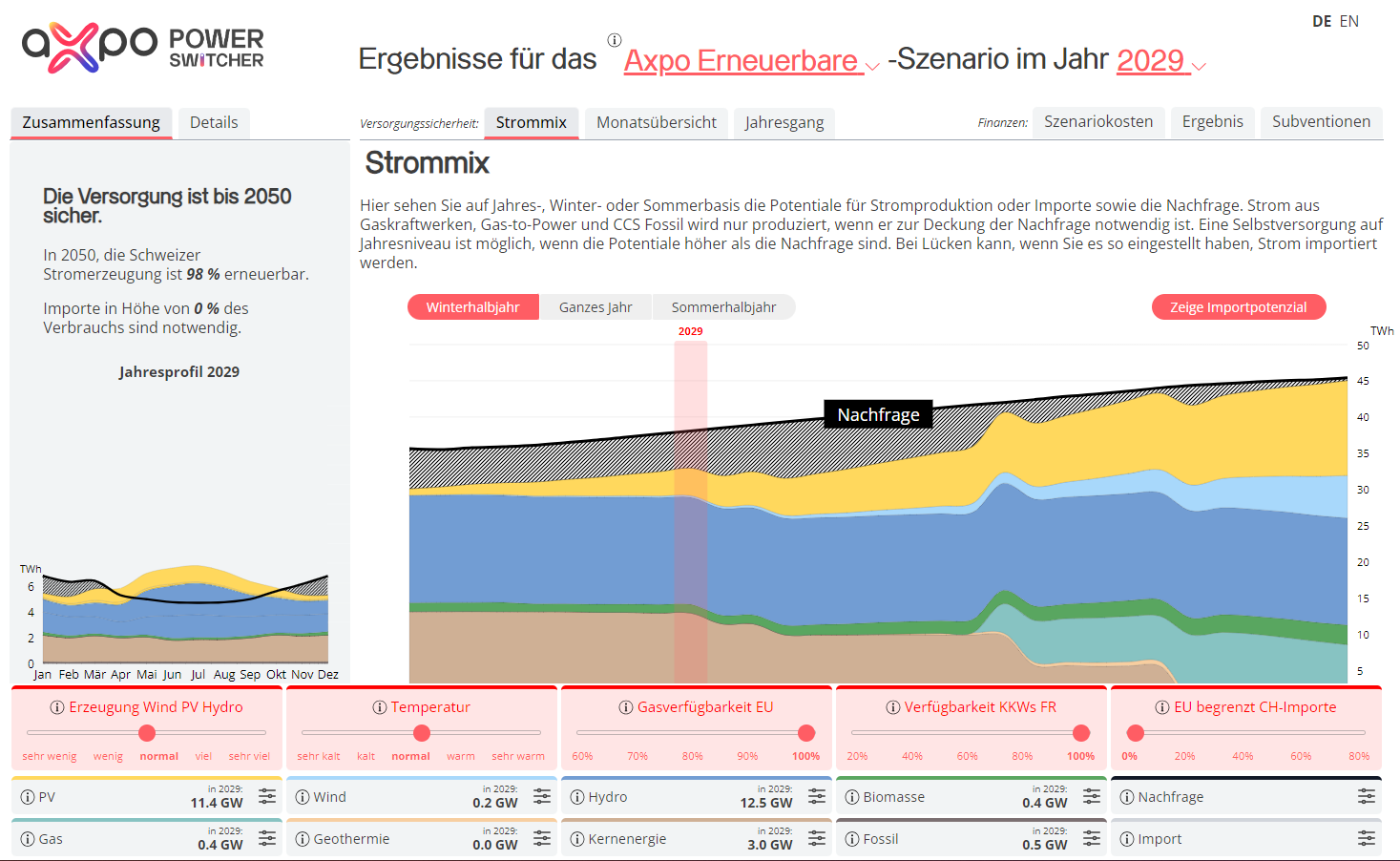18.08.2021 | Hydrogen – a flexible energy carrier for the energy turnaround
Splitting water
Green hydrogen is often touted as tomorrow's crude oil. The flexible energy carrier is considered essential for the energy turnaround and decarbonisation. Hydrogen will open up new markets and create new jobs. Axpo also wants to develop know-how on this topic and is building a hydrogen production facility at the Eglisau-Glattfelden hydropower plant. This article offers an understanding of the H2 topic.
Everyone's talking about green hydrogen. The energy carrier will help achieve climate goals up until 2050 (net zero) – and accordingly there are many exciting international projects for the production of H2 under way.
Axpo also sees the production of hydrogen as a viable, additional business activity and will produce green hydrogen from the Rhine River. The production facility at the Eglisau-Glattfelden hydropower plant is the first of many plants that Axpo will commission in Switzerland in the upcoming years.
The 2.5-megawatt hydrogen production facility at the Eglisau-Glattfelden power plant is scheduled to go into operation in the fall of 2022, and will produce about 350 tonnes of green hydrogen annually. This will save the road transport sector over 1.5 million litres of diesel fuel a year.
Questions and answers
You will find some key questions and answers on the topic of hydrogen below. Just click on the question to access information on the topic of H2.
No, it is not. Depending on hydrogen’s production method it can vary. As a result, hydrogen is classified according to colours.
Green hydrogen is produced through the electrolysis of water, whereby electrolysis take place solely with electricity generated from renewable energies. Independent of the selected electrolysis technology, the production of this hydrogen is CO2-free because the electricity used comes to 100% from renewable sources.
Grey hydrogen is produced from fossil fuels. As a rule, production takes place by transforming natural gas into hydrogen and CO2 under heat (steam reforming). The CO2 is then released into the atmosphere and increases the global greenhouse effect: The production of one tonne of hydrogen generates about 10 tonnes of CO2.
Blue hydrogen is grey hydrogen in which the CO2 is captured and stored (carbon capture and storage, CCS). Since the CO2 generated in hydrogen production is not released into the atmosphere and this production method can be considered CO2-neutral.
Turquoise hydrogen is produced through the thermal splitting of methane (methane pyrolysis). In the place of CO2, this process produces solid carbon. Prerequisites for the CO2-neutrality of this production method are that the heat supply to the high-temperature reactor is from renewable energy sources, and that the carbon is permanently bonded.
Yellow or pink hydrogen is produced from electricity generated from nuclear power – and is therefore also CO2-free.
The most important area is in industry: Green hydrogen can be used as an alternative fuel for ovens or help replace the fossil fuel basis in the chemical industry through the use of CO2, e.g. as a component for polymers.
Thanks to fuel cells, green hydrogen can be transformed into power and heat. This balances out fluctuations in the power grid, heats buildings, supplies them with electricity, and powers vehicles.
Green hydrogen can be used as a fuel in the transport sector – particularly where electrification is not feasible or possible and can power trucks, ships and aircraft.
Current efficiency is about 60 per cent using water electrolysis to produce hydrogen with renewable electricity. This means: About 60 per cent of the energy used for electrolysis goes into the hydrogen.ydrogen production is currently being widely researched, and according to the German Ministry of Research, it is expected that in the upcoming years efficiency will increase thanks to research and development. In addition: If the heat produced through electrolysis is used, a much higher degree of efficiency can be achieved.
The precise costs cannot be foreseen at this time. However, green hydrogen will become cheaper as the costs for renewable electricity production decrease and depending on the further progress in the development of water electrolysis. The "Handelsblatt" reports that according to a study by the Institute of Energy Economics (EWI) at the University of Cologne, the production costs for hydrogen by electrolysis with power from offshore wind farms in Germany could amount to 3.5 Euros per kilogramme by the year 2030, and under particularly favourable conditions costs under three Euros could be in reached. A consortium comprising various European companies believes that in Spain the price for green H2 electrolysed with solar power could be pushed down to 1.5 Euros per kilogramme. As a comparison: Conventionally produced hydrogen is currently available at a price of about 1.50 Euros per kilogramme.
Hydrogen is liquefied under high pressure. This is the only way to transport it feasibly and it is a complicated, expensive process. As a result, researchers are working to temporarily bond hydrogen to liquid organic hydrogen carriers (LOHC) in order to make transport easier.
Hydrogen can already be fed into the existing gas network in certain quantities. The limit is currently at ten per cent. However, it is likely that larger quantities would be possible. Like natural gas, surplus hydrogen can be burned and only generates steam. With the help of fuel cells, heat and electricity can be generated from hydrogen. You can read about how hydrogen can be integrated into the energy grid of the future here: Kopernikus-Projekt ENSURE.
Yes, there is. The EU has developed a hydrogen strategy. More details here.Germany also has a national hydrogen strategy. The federal government and states are supporting 62 major hydrogen projects with 8.3 billion Euros. Research projects like Kopernikus are also supported with these funds.
Switzerland is significantly behind the EU and Germany when it comes to a hydrogen strategy – so far, such a strategy is non-existent. Hydrogen is a topic in the Energy Perspectives 2050+ and an important part of the new Gas Supply Act. Research on H2 is being promoted under the research programme "Swiss Energy Research for the Energy Transition" (SWEET).




.jpg)





